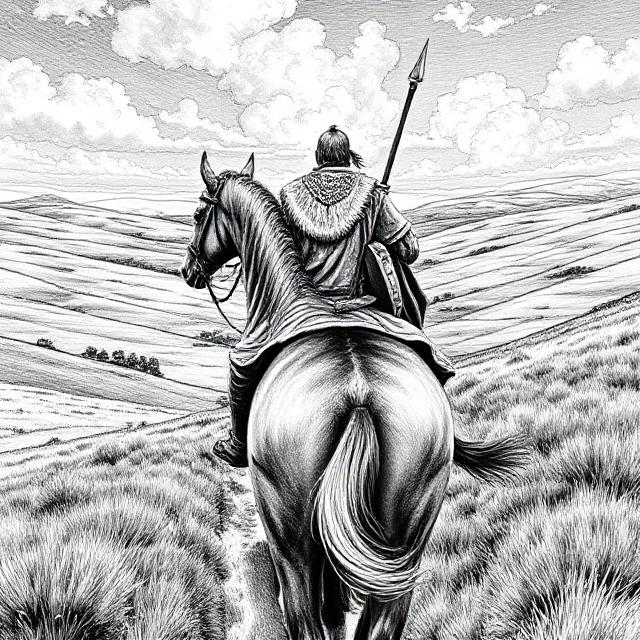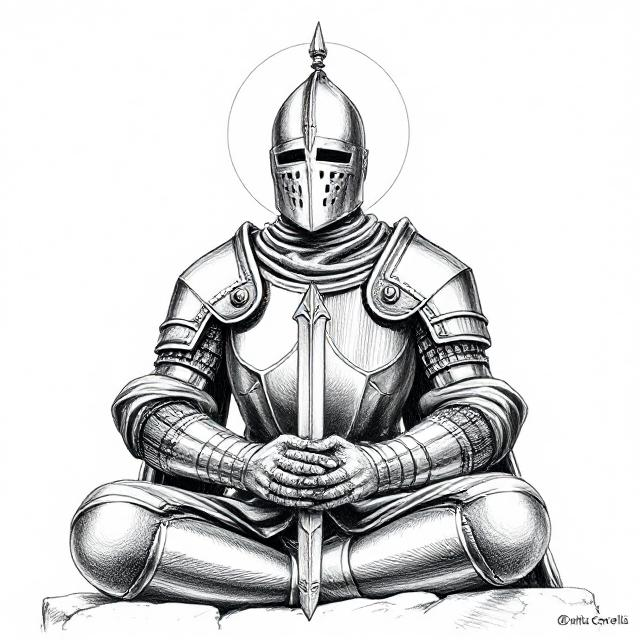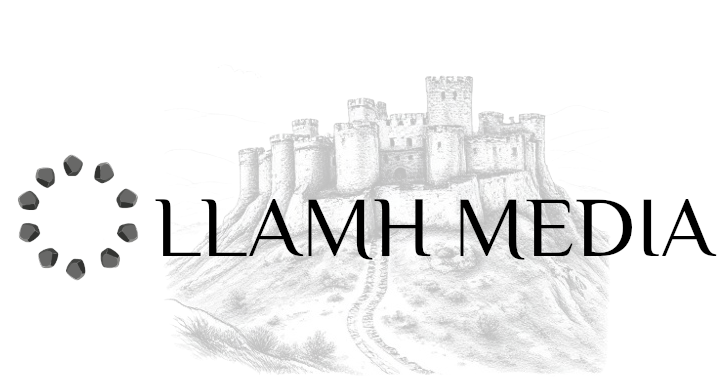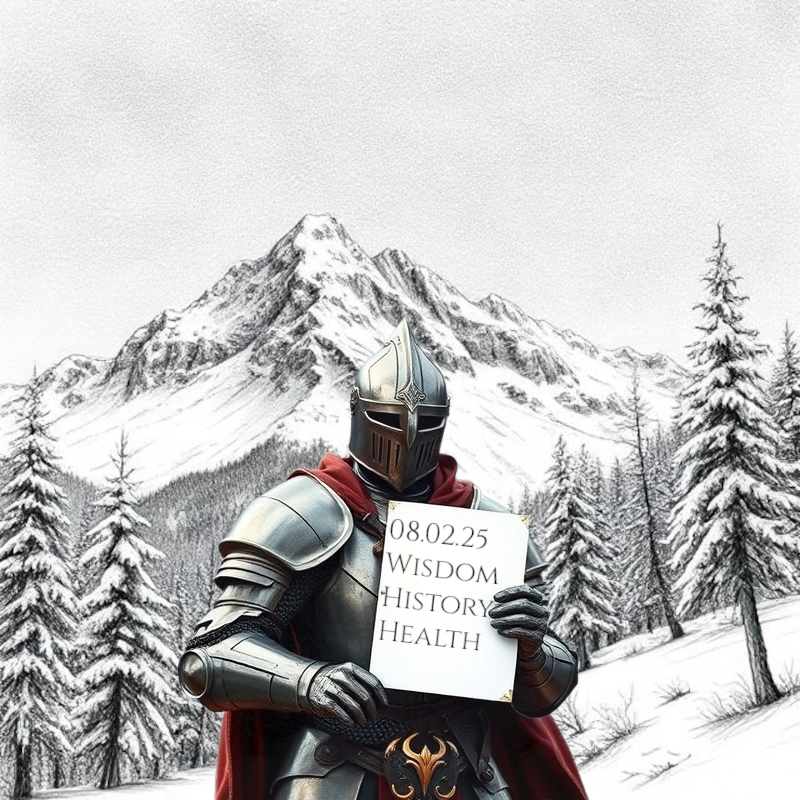In this edition of weekly wisdom, history & health we ask the questions, what is Mysticism? Who is the famous Gaelic Hero Cu’chulainn? What is a warrior’s mindset in the modern era?
What is Mysticism?
Firstly, mysticism is is the pursuit of direct, personal experience of the divine. This approach to knowledge transcends ordinary understanding through contemplation, meditation of ecstatic states. It is found across religious traditions, often forming the esoteric or inner dimension of faith. Mystics seek unity with the sacred, whether through visions, revelations or deep spiritual practices.
Those who look for seashells will find seashells; those who open them will find pearls.
– Imam Al-Ghazali (May Allah have mercy upon him)
Mysticism in the Abrahamic Faiths
Judaism
Kabbalah, the mystical tradition of Judaism, explores the hidden aspects of God (Ein Sof) and the universe through sacred texts like the Zohar. Hasidic Judaism emphasises joyful connection with God through prayer and song.
Christianity
Christian mysticism focuses on direct communion with God through contemplation, love and asceticism. The Desert Fathers, St. John of the Cross, and Meister Eckhart all explored mystical union with the divine. In Eartern Orthodoxy, Hesychasm (silent prayer) seeks divine illumination.
Islam
Sufism is the mystical branch of Islam, emphasising love and devotion to God. Practices like dhikr (remembrance of God) and whirling (as seen in the Mevlevi order) aim to achieve spiritual ecstasy. Mystics like Rumi and Al-Ghazali wrote about divine love and the soul’s journey to God.
Mysticism in Other Traditions
Hinduism
HIndu mysticism is vast, with Advaita Vedanta teaching non-duality (oneness of the self with Brahman). Bhakti yoga emphasises loving devotion, while Tantra explores mystical energy through rituals and meditation.
Buddhism
Zen Buddhism emphasises sudden enlightenment through meditation, while Vajrayana uses esoteric teachings and rituals to reach spiritual awakening.
Taoism
Taoist mysticism seeks harmony with the Tao (the Way), using meditation, breathing techniques and spiritual alchemy to achieve immortality or enlightenment.
Gnosticism
Many ancient and modern esoteric paths, like Gnosticism and Hermeticism, emphasis secret wisdom, inner transformation and the search for divine knowledge.
The Universal Thread
Despite differences, mystical traditions share a common goal: transcending the material world to experience divine truth directly. A spiritual awakening. However, there are many paths that are completely out of balance. We must ask ourselves, is there a system (religion) that has both the esoteric (spiritual) aspect and exoteric (outward practice) in complete harmony? Yes! That path is Islam.

Who is Cu’chulainn?
Cu’chulainn a legendary figure in Irish mythology, is one of the most revered and iconic heroes in Gaelic culture. His name, mean “Hound of Culann,” was given after he defeated a fierce guard dog in his youth and took it’s place. Born as Setanta to the warrior-king Lugh and Deichtine, Cu’chulainn’s early life was filled with remarkable feats that showcased his prodigious abilities, making him a symbol of strength, loyalty and bravery.
Cu’chulainn’s Youth
One of the most famous stories from his youth involves his training under the warrior woman Scathach in Scotland. It was here, presumably on the Isle of Skye that he learned the arts of combat. His training here is legendary, and he quickly became unmatched in battle. In Cu’chulainn’s first major test, he single-handedly defended Ulster against the armies of Connacht during the ‘Cattle Raid of Cooley (Tain Bo Cuailnge.). Using his incredible speed, strength and fighting prowess, he fended off hundreds of enemy soldiers, even while under the curse of the riastrad, a state where his body would contort and grow in size.
Cu’chulainns life was marked by heroic acts, but it was also filled with tragedy. His greatest challenge came when he was forces to fight his own son, Connla, whom he unknowingly fathered. Cu’chulainn would kill Connla, a moment that encapsulates the hero’s bittersweet and often violent path. Ultimately Cu’chulainn would die in battle, standing in a dignified manner.
His death marked the end of an era for the warriors of Ulster, leaving a deep mark on the Irish imagination.
Cu’chulainn’s Importance to the Gaelic People
Cu’chulainn has become a symbol of Irish identity, strength and resistance. His myth transcends mere folklore; he represents the spirit of Ireland itself. He was uncomprimising, resilient and fiercely independent. Over the centuries, both nationalists and loyalists have adopted Cu’chulainn as a symbol to further their political beliefs. Nationalists have embraced him as an icon of Irish independence, viewing his defiance of foreign invaders as a precursor to Ireland’s struggle for freedom from British rule. His fierce defence of Ulster and unwavering courage in the face of overwhelming odds resonate with the narrative of Irish resistance.
Conversely some loyalist groups have also adopted Cu’chulainn as a symbol, seeing in him the defence of Irish tradition and identity against outside forces. For them, Cu’chulainn represents a valorised, almost mythical vision of Irish strength, which they intertwine with their own political stance.
In both cases, Cu’chulainn is not just a historical figure; he embodies the ongoing struggle for power, identity and the right to self-determination, making him a central figure in Ireland’s political landscape.
If you would like to read a more in depth account of Cu’chulainn’s life, read my post about the hero here!

The Warrior’s Mindset
The warrior’s mindset is a unique mental framework that focuses on overcoming adversity, maintaining discipline and embracing challenge with relentless determination. Whether in sports, military service, or warfare, the warrior mindset emphasises mental toughness, resilience and focus on the mission. These traits will drive you to push beyond perceived limits and stay steadfast in the face of danger or difficulty.
Athletes: The Mental Game of Champions
Elite athletes often embody the warrior mindset, as their success depends not only on physical ability but also on their mental fortitude. Michael Jordan, for example, became synonymous with overcoming setbacks and pushing his limits. His famous quote, “I can accept failure, everyone fails at something. But I can’t accept not trying,” highlights his relentless drive and REFUSAL to be defeated. Jordan’s leadership and resilience on the basketball court exemplifies the warrior mindset.
Similarly, Khabib Nurmagomedov, the undefeated UFC fighter, has shown the warrior mindset through his controlled, disciplined approach to competition. For instance, his calm demeanour and focus on the fight itself rather than external distractions mirror the warrior’s philosophy: staying centered and fully immersed in the task at hand.
Special Operatives: Mental and Physical Mastery
In the realm of special forces, the warrior mindset is vital for success in high-pressure environments. Jocko Willink, a former Navy SEAL, teaches the value of “extreme ownership”. This is were you take full responsibility for everything in your life. His philosophy emphasises self-discipline, accountability and the ability to remain calm under pressure. Willink’s mindset has been a cornerstone of his leadership in combat, where mental resilience is as important as physical fitness.
David Goggins, a former Navy SEAL and ultra-endurance athlete, embodies the warrior mindset by constantly pushing his limits. Known for his extreme physical feats, Goggins speaks about the “40% rule”, which posits that when you feel like you’ve reached your limit, you’ve only tapped in 40% of your potential. His approach encourages embracing pain, discomfort, and fear to become stronger. These are traits shared by many warriors throughout history.
Historical Generals: Strategy and Resolve
Throughout history, many great generals displayed the warrior mindset in their strategic decisions and leadership. For example, Alexander the Great, at the age of 25, led his army to conquer much of the known world. His relentless pursuit of victory, his ability to lead by example, and his unyielding focus on the mission are all characteristics of the warrior mindset. His adaptability and quick thinking allowed him to prevail in countless battles, often against much larger armies.
Similarly, Napoleon Bonaparte, known for his tactical brilliance, demonstrated a warrior mindset through his ability to remain calm in chaotic situations and make bold, decisive moves. His strategic innovations, such as the corps system and focus on rapid movement, showcased the importance of mental agility in warfare.
Philosophers: The Inner Battle
The warrior mindset is also explored in philosophy, where the internal battle plays as much a role as the external one. Friedrich Nietzsche, in his concept of the Ubermensch, advocates for the individual to embrace hardship, develop inner strength and transcend limitations imposed by society. Nietzsche’s idea that one must create their own values and purpose resonated deeply with the warrior’s resolve to stay true to one’s path, even when the world offers resistance.
In Stoicism, philosophers like Marcus Aurelius emphasised resilience, mental clarity and the importance of accepting adversity with grace. His writings, particularly in Meditations, encourage individuals to focus on what is within their control, master their emotions, and act with virtue. The key aspects of the warrior mindset.
Embracing the warrior mindset serves as a timeless blueprint for anyone seeking to master both the inner and outer battles of life.


